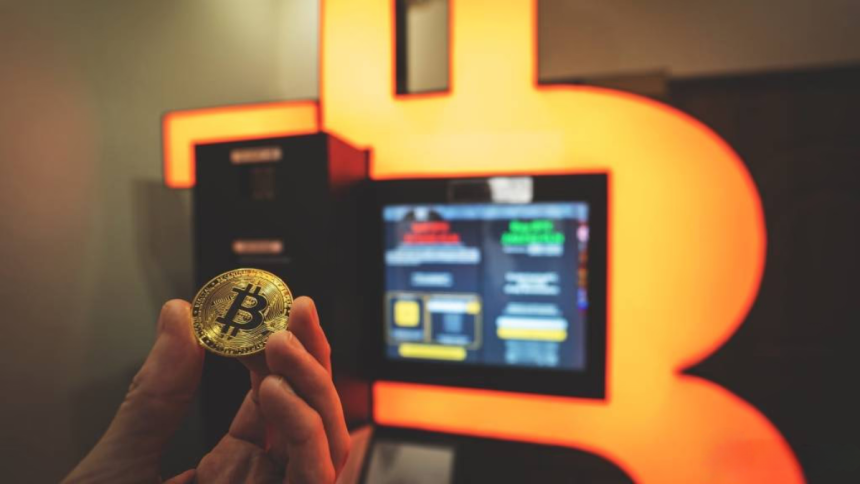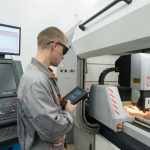Bitcoin ATMs have become increasingly common fixtures in convenience stores, shopping malls, and other public spaces around the world. These machines offer a convenient way to buy and sell Bitcoin without needing to navigate complex online exchanges or wait for bank transfers.
If you’re considering using a Bitcoin ATM for the first time, understanding what to expect can help you approach the experience with confidence.
What Exactly Is a Bitcoin ATM?
A Bitcoin ATM, also known as a BTM, is a physical kiosk that allows users to purchase Bitcoin using cash or a debit card, and in some cases, sell Bitcoin for cash. Unlike traditional ATMs that connect to your bank account, Bitcoin ATMs connect to cryptocurrency exchanges and facilitate transactions between fiat currency and Bitcoin. These machines serve as a bridge between the traditional financial world and the digital currency ecosystem.
The concept might seem futuristic, but Bitcoin ATMs operate on relatively straightforward principles. They essentially act as intermediaries, taking your cash payment and transferring the equivalent amount of Bitcoin to your digital wallet. The process is designed to be user-friendly, making cryptocurrency accessible to people who might be intimidated by online exchanges or complex trading platforms.
Preparing for Your First Visit
Before heading to a Bitcoin ATM, there are several important preparations you’ll need to make. First and foremost, you’ll need a Bitcoin wallet. This is a digital application that stores your Bitcoin and allows you to send and receive the cryptocurrency. You can choose from various types of wallets, including mobile apps, desktop software, or hardware devices. Mobile wallets are often the most convenient for ATM use since you can easily scan QR codes with your phone’s camera.
You’ll also need to bring a valid government-issued photo ID, as Bitcoin ATMs are required to verify user identity for transactions above certain amounts. The specific requirements vary by location and operator, but having identification ready will ensure a smooth transaction process. Additionally, bring cash or a debit card, depending on what payment methods the specific ATM accepts.
It’s wise to research the fees associated with the particular Bitcoin ATM you plan to use. For example, if you live in Houston, you have to research for Houston Bitcoin ATM fees in your area. These fees can vary significantly between operators and locations, typically ranging from 5% to 20% of your transaction amount. Some ATMs also have minimum and maximum transaction limits, so knowing these constraints beforehand can help you plan your purchase accordingly.
The User Experience: Step by Step
When you arrive at a Bitcoin ATM, you’ll typically encounter a touch screen interface that guides you through the transaction process. The first step usually involves selecting your preferred language and choosing whether you want to buy or sell Bitcoin. For first-time users, buying Bitcoin is the most common option.
The machine will then prompt you to enter your phone number for verification purposes. You’ll receive a text message with a verification code that you’ll need to enter into the ATM. This step helps prevent fraud and ensures that transactions are legitimate. Some ATMs may also require you to scan your ID at this point, particularly for larger transactions.
Next, you’ll need to specify the amount of Bitcoin you want to purchase. You can typically choose to buy a specific dollar amount or a particular quantity of Bitcoin. The machine will display the current exchange rate and calculate exactly how much Bitcoin you’ll receive after fees are deducted. Take a moment to review these details carefully before proceeding.
The ATM will then generate a QR code that represents your Bitcoin wallet address, or you can scan the QR code from your existing wallet app. If you don’t have a wallet yet, some ATMs can print a paper wallet for you, though this is less secure than using a proper digital wallet application.
Payment and Transaction Completion
Once your wallet information is confirmed, you’ll proceed to the payment stage. If you’re paying with cash, the ATM will prompt you to insert your bills into the designated slot. The machine will count your money and display the amount received. For debit card payments, you’ll need to insert your card and enter your PIN, similar to using a regular ATM.
After payment is processed, the Bitcoin ATM will initiate the transfer of Bitcoin to your wallet. This process isn’t instantaneous due to how Bitcoin transactions work on the blockchain network. The initial transfer might appear in your wallet within a few minutes, but full confirmation can take anywhere from 10 minutes to several hours, depending on network congestion.
The ATM will provide you with a receipt that includes important transaction details such as the transaction ID, the amount of Bitcoin purchased, the exchange rate used, and any fees applied. Keep this receipt for your records, as it serves as proof of purchase and can be useful for tracking your transaction or resolving any potential issues.
Common Challenges and Solutions
First-time users often encounter a few common challenges when using Bitcoin ATMs. One frequent issue is confusion about wallet addresses and QR codes. Remember that your wallet address is like your bank account number in the Bitcoin world, and the QR code is simply a visual representation of this address that’s easier for machines to read.
Another common concern is the seemingly high fees charged by Bitcoin ATMs. While these fees are indeed higher than those found on online exchanges, they reflect the convenience and accessibility that ATMs provide. You’re paying for the ability to buy Bitcoin instantly with cash, without the need for bank transfers or online account verification processes.
Some users also worry about the security of Bitcoin ATM transactions. These machines are generally safe to use, but it’s important to choose ATMs from reputable operators and avoid using machines in isolated or poorly lit locations. Always be aware of your surroundings and protect your privacy when entering sensitive information.
After Your Transaction
Once your Bitcoin purchase is complete, the cryptocurrency will be transferred to your wallet. You can monitor the transaction status using your wallet app or by checking the transaction ID on a blockchain explorer website. Your Bitcoin is now ready to use for purchases, trading, or long-term holding, depending on your investment goals.
Remember that Bitcoin is a volatile asset, and its value can fluctuate significantly. The amount you paid at the ATM represents the market price at that specific moment, but the value of your Bitcoin will continue to change based on market conditions.
Using a Bitcoin ATM for the first time can feel overwhelming, but the process is designed to be straightforward and user-friendly. With proper preparation and understanding of what to expect, you can confidently navigate your first Bitcoin ATM transaction and take your first step into the world of cryptocurrency ownership.
Lynn Martelli is an editor at Readability. She received her MFA in Creative Writing from Antioch University and has worked as an editor for over 10 years. Lynn has edited a wide variety of books, including fiction, non-fiction, memoirs, and more. In her free time, Lynn enjoys reading, writing, and spending time with her family and friends.















